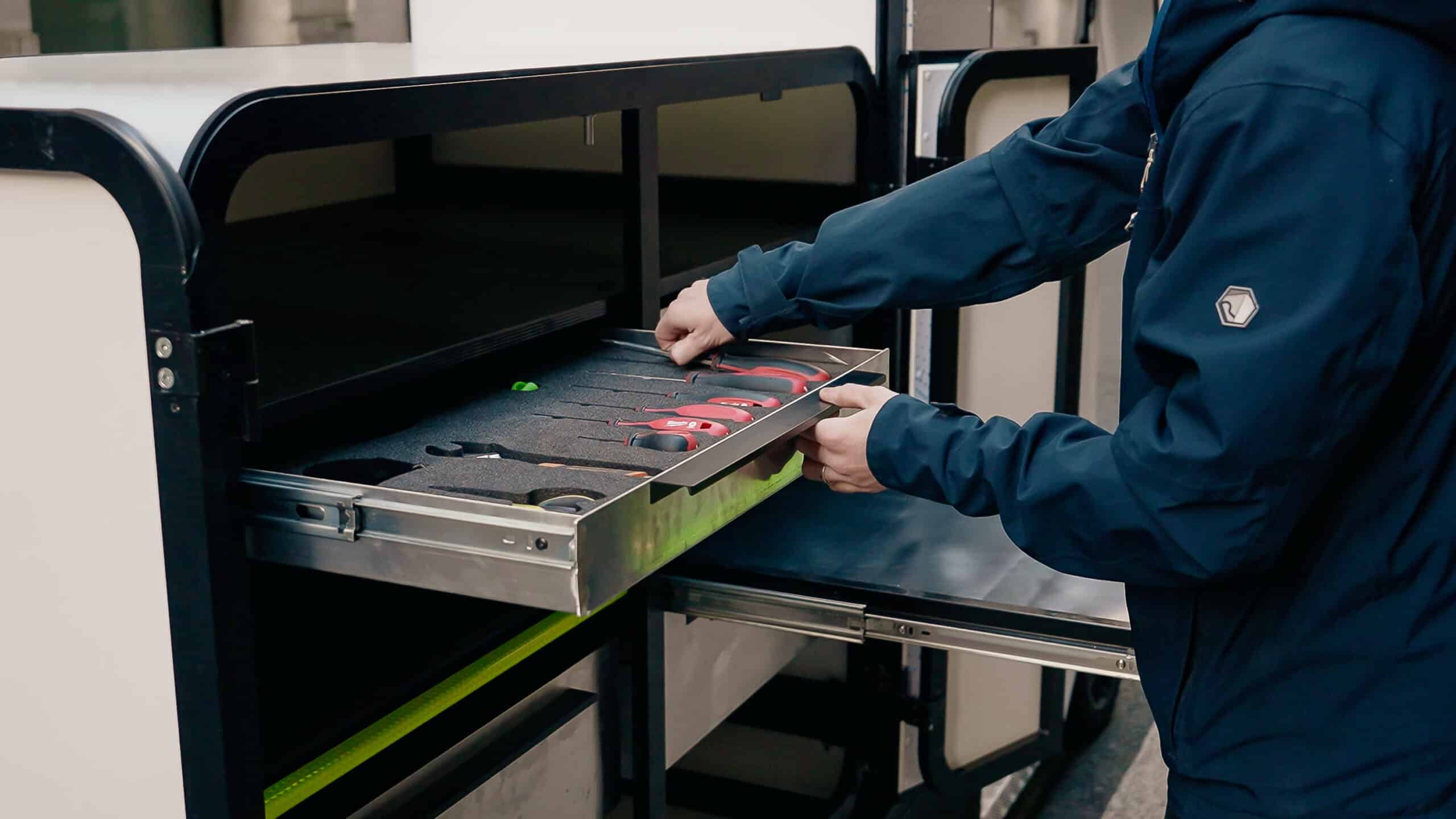It’s fair to say utility workers face the ongoing challenge of navigating busy streets, tight schedules, and environmental concerns. Innovative solutions are necessary to maintain both productivity and sustainability in city operations. Fernhay’s eQuads are one such solution—offering a flexible, eco-friendly alternative to traditional service vehicles. This post explores how eQuads benefit utility workers and support operational efficiencies across urban landscapes.
What Are eQuads?
They are electrically powered, compact cargo vehicles designed specifically for maneuvering through dense urban settings. Developed by Fernhay, eQuads prioritize sustainability and efficiency, providing an alternative to traditional utility vehicles. Their unique structure allows them to bypass congested areas, reach hard-to-access locations, and reduce carbon emissions.
Why eQuads Matter for Utility Workers
Utility workers, especially those responsible for infrastructure maintenance and service repairs, require quick and direct access to various parts of the city. Traditional vans or trucks are often hampered by traffic, limited parking, and restrictive road access. eQuads, on the other hand, can access narrow lanes, pedestrian zones, and areas with limited parking. Key benefits include:
- Increased Mobility: The compact design allows for access through bike lanes and sidewalks.
- Reduced Emissions: Fully electric, they lower the carbon footprint, aligning with environmental regulations and company sustainability goals.
- Operational Cost Savings: Reduced fuel and maintenance costs make them a cost-effective alternative to larger vehicles.
Key Features
1. Compact and Agile Design
They have a compact, lightweight design that is easy to maneuver. This is essential for utility workers who need to move from site to site quickly and efficiently. The structure enables access to places typically off-limits to larger service vehicles, such as bike paths and narrow streets.
2. Sustainable and Low-Emission
As fully electric vehicles, they produce zero emissions during operation. This feature not only reduces the environmental impact but also supports companies in meeting local and federal emissions standards. Sustainability is a growing concern, and eQuads help bridge the gap between efficient service delivery and eco-conscious operations.
3. Extended Cargo Capacity
Despite their compact design, they are optimized for carrying essential tools and materials, allowing utility workers to transport everything they need without compromising mobility. This added storage capacity is perfect for utility operations where specialized equipment is necessary for site visits and repairs.
Advantages of Using eQuads in Utility Operations
1. Enhanced Speed and Efficiency
eQuads allow workers to quickly navigate city streets, reducing travel time significantly. In congested urban areas, time lost in traffic can be a major cost driver. With eQuads, utility workers can take alternative routes and avoid peak traffic areas, leading to more timely service delivery.
2. Flexible Access in Restricted Zones
Many urban areas restrict vehicle access to reduce congestion and improve pedestrian safety. Utility workers using eQuads can enter these zones without restrictions, improving response times. This flexibility is especially beneficial for emergency repair crews needing immediate access.
3. Lower Operational and Maintenance Costs
Compared to larger service vehicles, they have lower operating costs, which adds up over time. They have fewer parts that require regular maintenance and are powered by electricity, which is generally more affordable than fuel. This cost savings allows utility companies to reallocate resources toward enhancing other service areas.
4. Improved Health and Safety for Workers
Utility workers often spend long hours in and out of vehicles, carrying heavy tools. The ergonomic design allows workers to easily load and unload equipment, which can reduce physical strain. Additionally, the quiet operation of electric vehicles reduces noise pollution, which is beneficial for both workers and city residents.
Implementing eQuads in Utility Operations
For utility companies considering the adoption of eQuads, the transition requires planning and coordination. Here are steps to facilitate a successful implementation:
- Assess Urban Route Accessibility: Identify high-traffic and restricted-access areas where eQuads could save time.
- Train Workers for eQuad Operations: Training ensures that workers can take full advantage of eQuads’ features, maximizing efficiency and safety.
- Analyze Cost Savings Potential: Conduct a cost-benefit analysis to understand the financial impact of switching to eQuads from traditional vehicles.
- Engage in Sustainability Reporting: eQuads provide measurable sustainability metrics, valuable for both regulatory compliance and public relations.
The Future of Utility Operations
The adoption, such as the CityLab by Vorboss in utility work marks a step towards smarter, more sustainable urban logistics. As cities become more crowded, and environmental regulations tighten, utility companies will increasingly turn to innovations like eQuads to meet operational demands. Beyond utility work, sectors such as urban delivery and public maintenance may also benefit from eQuad technology, suggesting a future where these vehicles are integral to sustainable city operations.
Conclusion
Fernhay represent a forward-thinking solution for utility operations, balancing efficiency with environmental responsibility. For utility workers, these vehicles provide the accessibility, speed, and storage required to excel in complex urban settings. As eQuads gain traction, they will play a pivotal role in shaping the future of urban utility work, creating cities that are not only more sustainable but also more accessible.
Utility companies looking to adopt one can look forward to not only operational benefits but also contributing to a greener, more efficient urban infrastructure.

